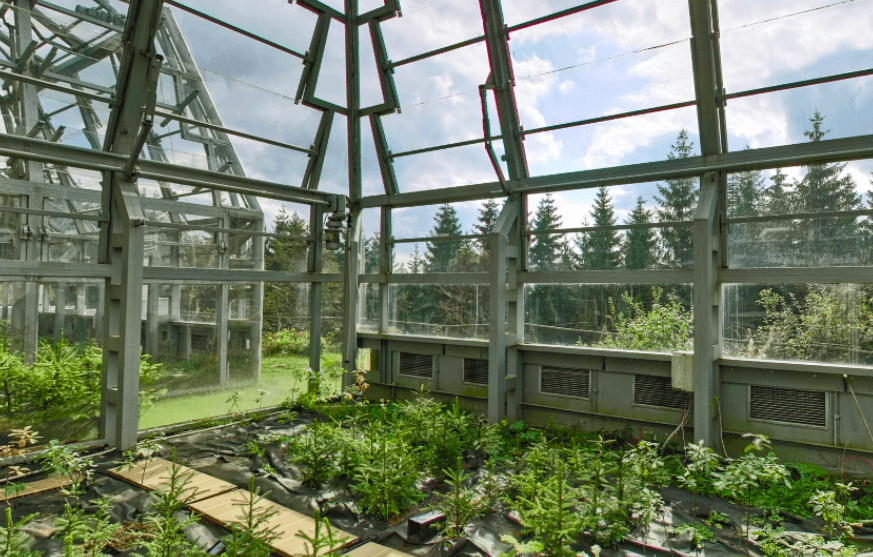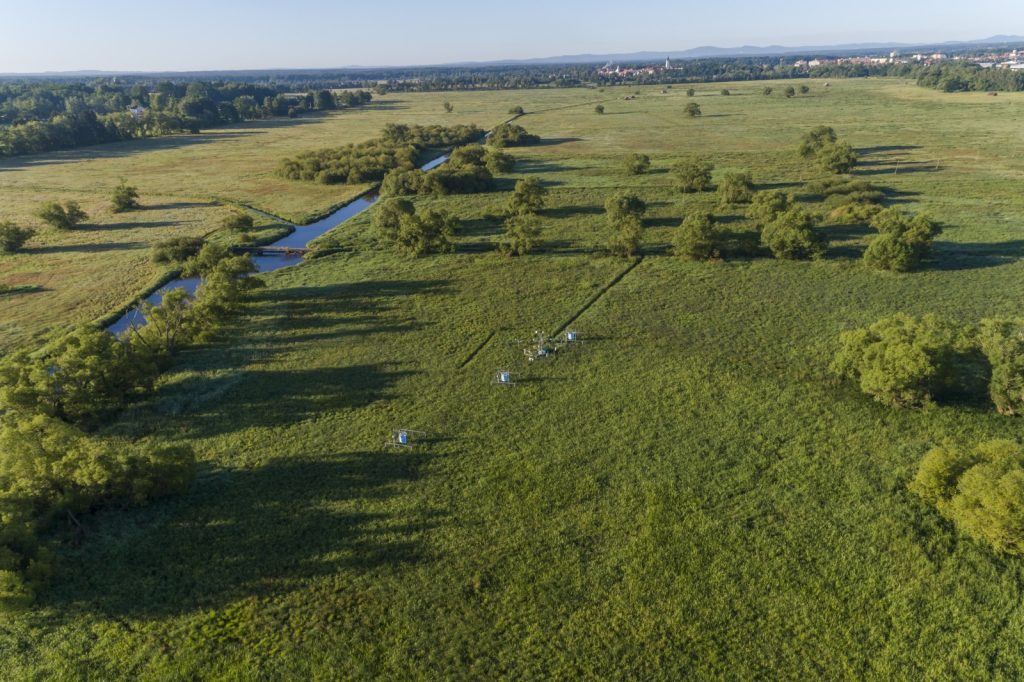The infrastructure of the Centre of Excellence CzechGlobe is distributed throughout the Czech Republic, and at present it includes the following core elements:

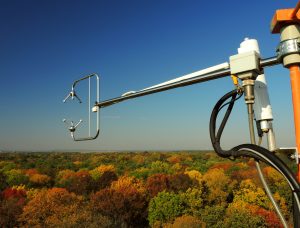
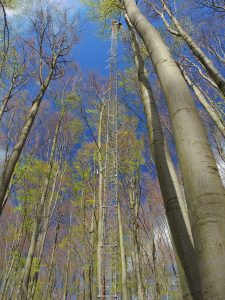
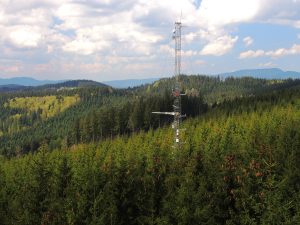
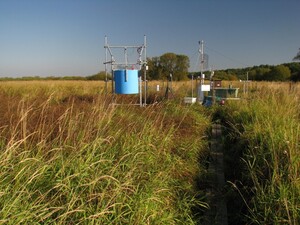
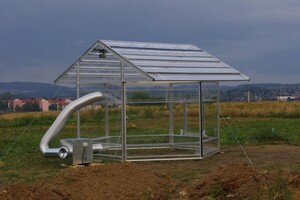
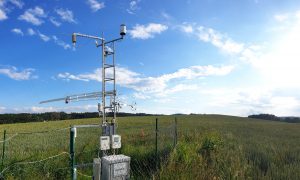
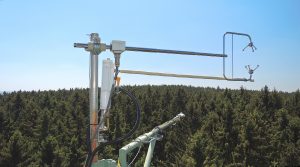
1. Atmospheric station
The Atmospheric Station Křešín near Pacov in the Bohemian–Moravian Highlands serves as a national monitoring point of both the occurrence and remote transmission of greenhouse gases, selected pollutants and basic meteorological characteristics. The station consists of a 250-metre-high meteorological mast, at whose various height levels atmospheric concentrations of greenhouse gases (CO2, CH4, CO, N2O, SF6), pollutants (tropospheric ozone, gaseous mercury, aerosols) as well as basic meteorological characteristics (air temperature, pressure and humidity, wind speed and direction) and the height of the atmospheric boundary layer are monitored. This facility is part of a network of atmospheric stations within the European Research Infrastructure ICOS. Its location in close proximity to observatory Košetice and other research infrastructures of CzechGlobe makes the atmospheric station significant on both the Czech and European level. It is an open access research infrastrucure and also a part of the transnational access framework under the European project ACTRIS-2. Information about the infrastructure can be found here.
2. Network of ecosystem stations
The original network of ecosystem stations (Bílý Kříž, Štítná, Třeboň, Křešín u Pacova, Rájec) has been modernized and supplemented with new stations (Lanžhot, Domanínek) focusing on monitoring, quantification and evaluation of carbon fluxes in the basic types of ecosystems in the Czech Republic. The basic tools for these measurements are meteorological towers with eddy covariance technique and with sensors for monitoring meteorological elements. All seven ecosystem stations are equipped, in accordance with ICOS protocol, with instrumentation for measuring fluxes of greenhouse gases (CO2, N2O and CH4), water and energy between terrestrial ecosystems and the atmosphere, basic climatic characteristics, CO2 profile, spectral reflectance, and transpiration fluxes in trees.
3. Systems of long-term impact experiments
To carry out experiments whose results allow the evaluation of interactions between the influence of GCC impacts and independent environmental factors in terms of the impact on plant physiology, production processes, plant metabolism and adaptation mechanisms in plants, a phytotron hall with a cluster of growth chambers (phytotrons) allowing automatic regulation of atmospheric composition, temperature, air humidity, and intensity and spectral composition of light has been built in the pavilion of experimental techniques in Brno. In addition, a field system of cultivation chambers (open-top chambers) has been built in Domanínek near Bystřice nad Pernštejnem. Together with existing cultivation lamellar mini-domes at Bílý Kříž, they enable long-term cultivation of model plant vegetation under regulated environmental conditions.
4. Airborne remote sensing laboratory
For the process imaging of the carbon cycle, a station for collection/reception and processing of airborne and satellite FLIS (Flying Laboratory of Imaging Systems) data has been built. The laboratory includes an aerial carrier, spectroradiometers for capturing reflected solar radiation in the spectral range of 400–2,500 nm, a single-band thermal sensor, GPS sensors, gyro-stabilization frames, a system for managing sensors during flight, and a ground support laboratory. Within the Airborne Remote Sensing Laboratory a workstation and data storage for the processing and analysis of hyperspectral data has been opened as well. The preview of the captured data within the Czech Republic is available at Airborne data CzechGlobe.
5. Central physiological, isotopic and metabolomic plant laboratory
A pavilion of experimental techniques has been built at the CzechGlobe’s premises in Brno. It includes a central physiological, isotopic and metabolomic laboratory for studying processes of carbon assimilation. The laboratory of ecophysiological studies is equipped with a set of portable devices for ecophysiological measurements (gasometric systems, fluorometers, spectroradiometers) and stationary analytical instruments (spectrofluorimeter, Raman spectrometer). The isotopic and metabolomic laboratory is equipped with a complete system of two-dimensional gas chromatography with a mass detector for volatile and easily derivable metabolites, high pressure liquid chromatography with a mass detector for assessment of non-volatile metabolites, and an isotope-ratio mass spectrometer for determining the ratios of stable isotopes in both gaseous and solid samples of the soil–plant–atmosphere system and isotope ratios in selected metabolites. The laboratory is also equipped with a thermogravimetric analyser.
6. Cabinet of socio-economic studies
For the needs of researching the socio-economic dimension of GCC, a cabinet of socio-economic studies has been opened. Within the cabinet, a statistical and econometric model for the integrated evaluation of socio-economic impacts of GCC, including interactions between society and ecosystem services affected by GCC, has been launched. These evaluations enable both predictions of the impacts of mitigation and adaptation measures on ecosystem services, economic performance, and other economic indicators, as well as the proposal of optimized solutions of these measures.
7. Education, information and demonstration centre
A Technical, Administrative and Training Centre is available at the Domanínek experimental site. The centre serves as a technical and laboratory facility for experiments with fast-growing woody plants for biomass production, as well as for multifactor field experiments in the OTC. It also serves as a training centre for students, business professionals, consultants, state administration and local government employees, and members of the scientific community interested in the topic of renewable resources.

